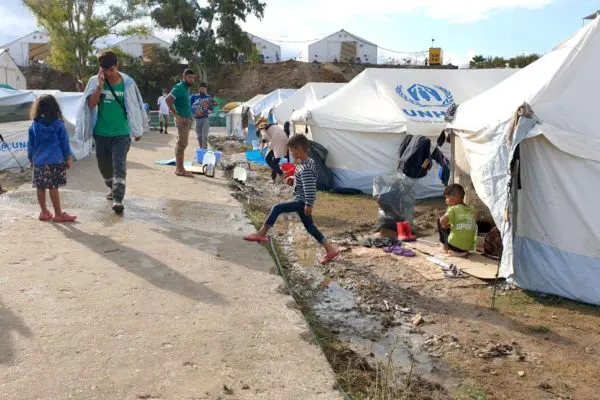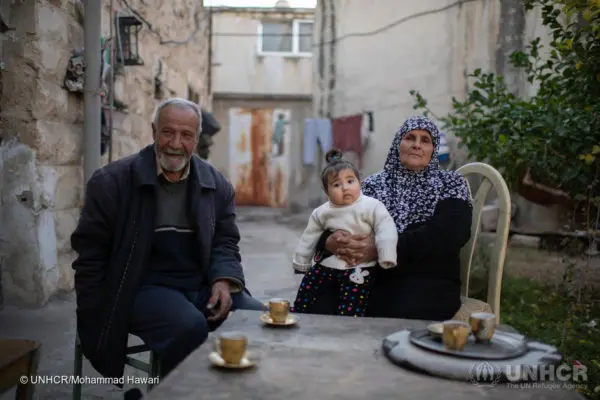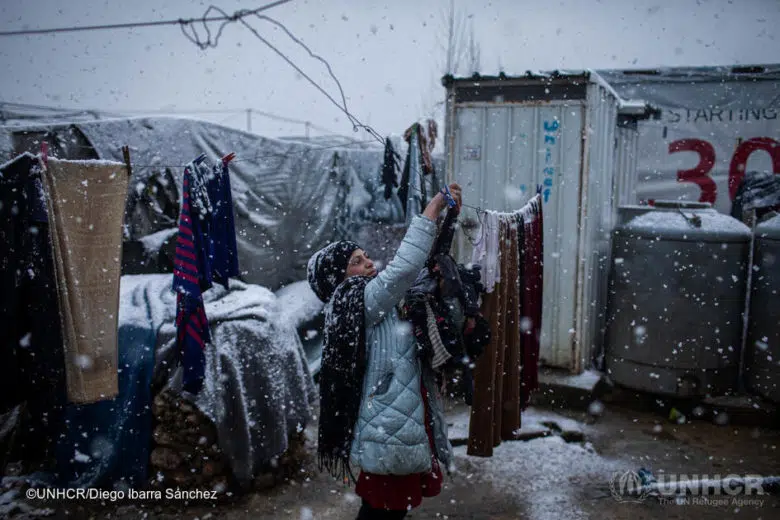
Siba Issa El Ali, a 10-year-old Syrian refugee girl from Deir ez-Zor, takes down the laundry during the storm at her house in an informal settlement camp in Beqaa Valley. She spends day and night removing water from her tent.
Each year, millions of forcibly displaced people face severe winter weather, which makes already difficult living conditions much more dangerous. UNHCR, the UN Refugee Agency, helps by providing winter assistance to try and prevent conditions from worsening.
While some may think of countries in the Middle East and Asia as having warm climates, winter weather in these regions can be harsh. Refugees and displaced communities, who live in countries like Syria, Lebanon, Afghanistan, Egypt, Jordan and Iraq can face sub-zero temperatures, storms, flooding and extreme weather each winter. UNHCR, the UN Refugee Agency, provides lifesaving aid to these communities in the form of winter assistance, which includes winter essentials such as blankets, warm clothes, fuel for heaters, insulation materials and cash assistance. Learn more about how UNHCR helps support displaced families during the winter season below. You can make a secure, online donation to UNHCR’s winter assistance efforts.
What is winter like for refugees in these countries?
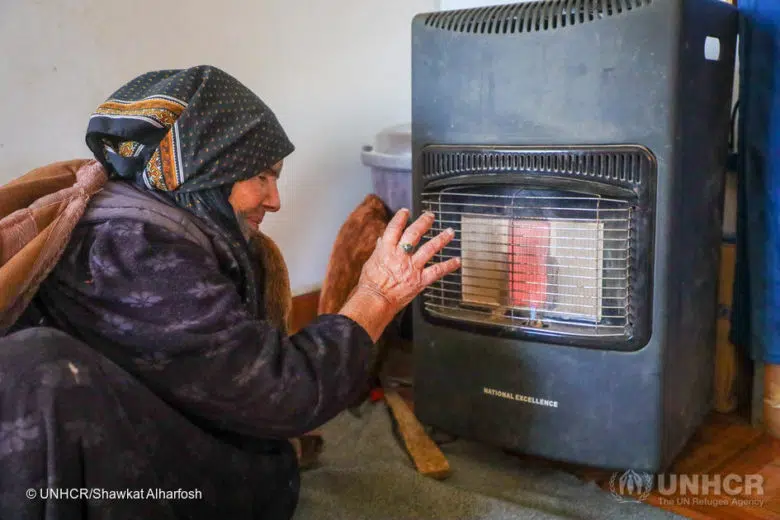
Um Kamal is an 84-year-old widow living in Zaatari refugee camp Jordan. She arrived in the camp in 2014 and cares for her granddaughter, Aya, 9.
More than three million people need critical assistance to help them prepare for winter in countries like Syria, Lebanon, Afghanistan, Jordan, Egypt and Iraq. For many, this will be another winter away from home, with many living in extreme poverty, further exacerbated by the COVID-19 pandemic.
In Syria, Jordan and Lebanon, temperatures can drop below zero, with heavy rain and snowstorms. Refugee settlements in Lebanon are often hit with snowstorms, causing icy, dirty water to flood into shelters, damaging families’ precious few belongings.
In Iraq, the temperature can drop as low as two degrees Celsius with high winds, causing prolonged periods of frost. With many living in unfinished shelters, families can be faced with the threat of hypothermia.
In Egypt where winters can be milder, families still face low temperatures and frequent rain.
In Afghanistan where temperatures often reach as low as –12 degrees Celsius, heavy snow fall is common. In many parts of the country, roads are blocked during the winter, limiting access to health care services.
Though the temperatures may not be as cold as the weather we see in Canada, temperatures are low enough to cause hypothermia and other illnesses, and the storms can damage shelters and settlements. Without the support of UNHCR and our donors, winter poses a threat to the health and livelihoods of displaced families.
How does UNHCR provide winter assistance?
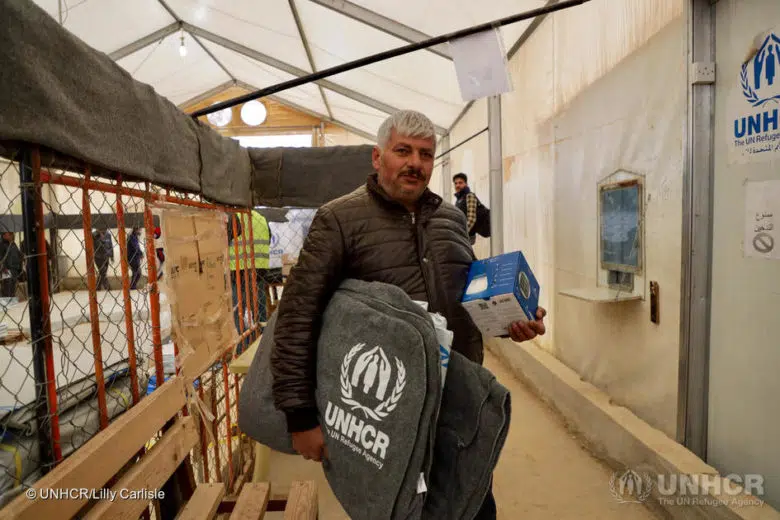
A Syrian refugee picks up blankets and a solar lamp during the distribution of winter supplies in Zaatari camp, Jordan.
Each year, UNHCR provides lifesaving winterization assistance to people in need in places like Syria, Afghanistan and Lebanon. UNHCR helps millions of people, with the vital support of donations, through:
- Winter cash assistance: Cash allows families the freedom to spend on their most urgent needs, typically rent or food and fuel for heating
- Core relief items: Providing items like high thermal blankets, plastic sheets, sleeping bags and winter clothes can be a lifeline in harsh weather
- Shelter: UNHCR helps winterize accommodations through weather proofing and repairs, improvements to drainage systems and insulation
UNHCR uses donor funding to reach those most in need. In one winter season, with your support, the following can be achieved:
In Syria, over 150,000 Syrian families across the country will receive core relief items, such as winter clothing kits, jackets, sleeping bags and plastic sheeting. Cash assistance will also be provided.
In Jordan, almost 100,000 Syrian and Iraqi families who live in camps and urban areas will receive cash assistance to help them meet their basic needs.
In Lebanon, over one million Syrian, Iraqi and other refugees will receive winter cash assistance for a period of up to five months. As the refugee situation in Lebanon is protracted, and the impact of the economic crisis, COVID-19 and the deadly August 2020 explosion in Beirut, have all led to a rise in poverty, cash assistance will help build resilience for displaced families.
In Iraq, more than 250,000 Iraqi internally displaced persons and returnees, along with almost 70,000 Syrian families and 13,000 other refugee families, will receive winter assistance through a cash grant.
In Egypt, nearly 60,000 refugee families will receive cash assistance to help them pay for basic goods like clothing, heating and blankets.
In Afghanistan, UNHCR’s winterization assistance is focused on helping 30,000 families survive harsh conditions. Core assistance items, including blankets, solar lanterns, tent insulation kits and cash will be provided.
All this will be made possible through generous gifts from our donors. Learn more about UNHCR’s 2021-2022 Winterization Assistance Plan.
DONATE TO SUPPORT REFUGEES THIS WINTER
What is cash assistance?
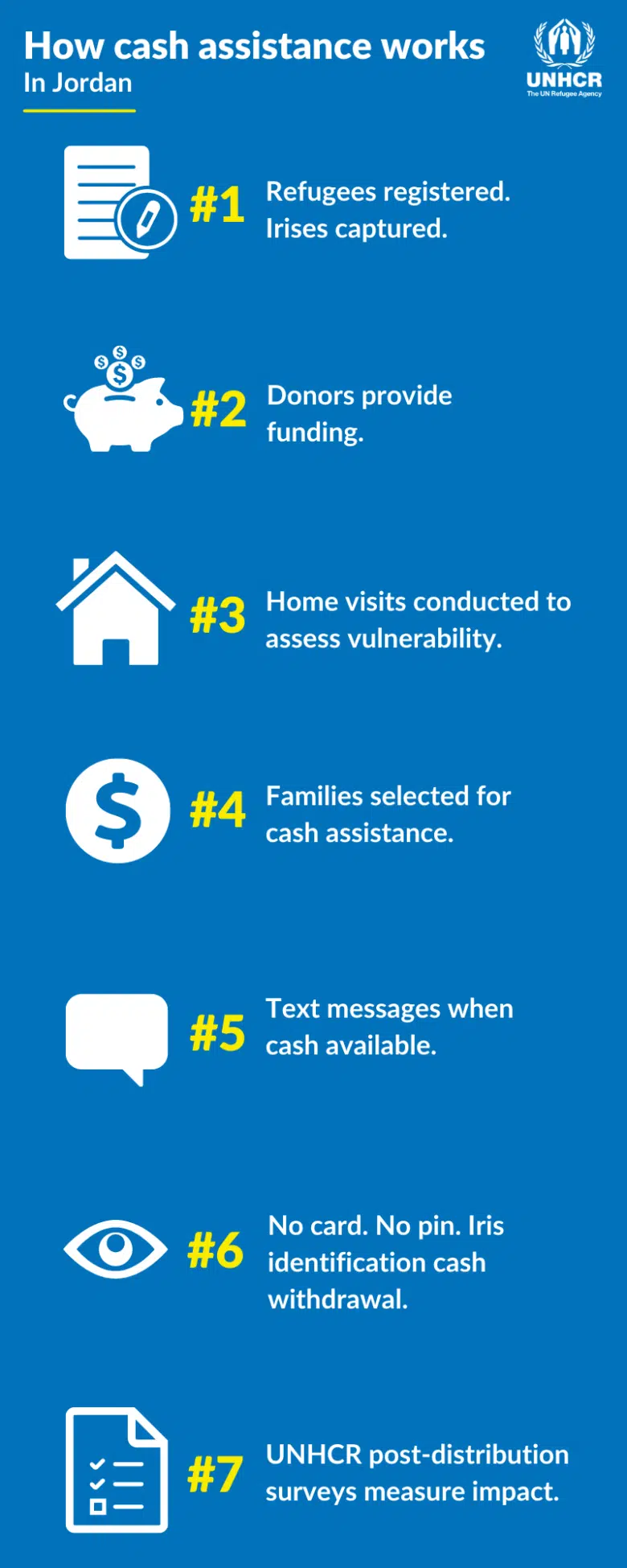
When donating to UNHCR’s cash assistance program, $93 out of every $100 goes directly to refugee families because there are few overhead or administrative fees, except for bank charges.
Cash assistance helps those in camps and urban areas – like cities – spend money where it is most needed, providing flexibility, improving efficiency, enhancing dignity, and boosting the local economy.
During the winter, cash assistance can be used for winter clothes, shelter accommodations, fuel, blankets and more.
Khod’s story: How a Syrian refugee faces winter in Lebanon
Khod and her family did not know the difficulties they would face when they were forced to flee their home in Syria seven years ago. Year after year they battle the cold, rain, wind and storms that the winter season in Lebanon brings. At times, Khod says that the weather is so cold they must use their mattress as a blanket—and yet they still don’t feel warm.
A family tragedy, along with the threat of COVID-19, has brought its own unique, devastating problems. In May 2020, Khod’s husband died, leaving her alone to support their children. As the sole provider for the family, Khod has struggled to get her children enough food. She has hopes that her children will have a better future.
‘I wish my children could get an education and to have a better life than the one I have lived; to live a life better than the suffering we have endured and lived.’
Through the UNHCR winter cash assistance program, Khod no longer needs to choose between food, heating or the health and education of her children. The flexibility of cash assistance means the different needs of each family, whether it is food, heat or medication, can be met. They are empowered to make the choices that support their own families in the best way possible.
Khod’s story is not a unique one. Millions of refugees struggle through the winter months. That’s why, each year, UNHCR works with refugees to prepare for the winter season. We stand ready, with the support of our donors, to help refugee families and ensure they have the resources they need to get through the freezing winter months.
How can I help refugees this winter?
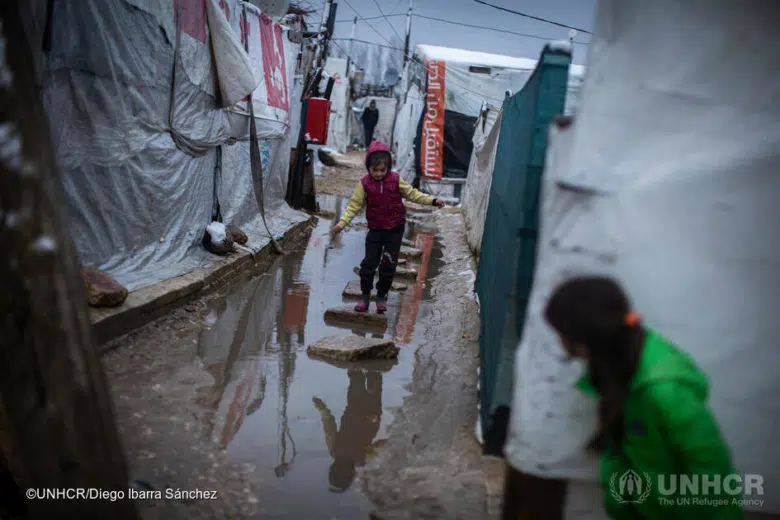
A young Syrian refugee walks through a flooded informal settlement camp after a heavy storm in Beqaa Valley.
There are many ways you can help refugee families as they endure the winter season. You can donate $82 to provide three solar lanterns to a displaced Afghan family, allowing them access to practical, affordable and clean energy this winter. Your gift of $114 can help a Syrian refugee living in Iraq to pay for winter essentials like warm clothes and a winter jacket.
If you are looking for a way to pay your zakat, you can give through UNHCR and 100% of your donation will reach refugees.
You can also start a fundraiser to encourage family or friends to help. If you raise $350, this will provide enough cash assistance to a displaced family for them to buy much needed fuel for heating and winter clothes. If you’d like to help raise awareness, share this blog post on social media or sign up for our mailing list to stay informed.



